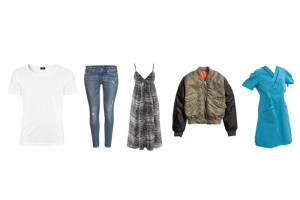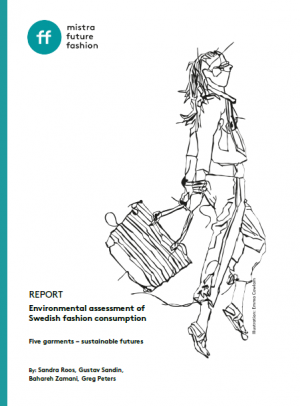A group of researchers within Mistra Future Fashion present the most detailed analysis of the environmental impact from the Swedish fashion consumption. By the use of Life Cycle Assessment (LCA) of five different representative garments, the researchers are able to provide a more comprehensive understanding of the fashion consumption’s environmental effects.

Freshwater usage is one of the indicators included in the analysis, and in contrast to former believes, laundry is not the most damaging phase of a garment’s life cycle. Instead the production phase bears the greater share of the burden.
– Consumer’s laundry of the garments requires large quantities of water, but the negative effects are not as dominant as production since the use of water for washing clothes in Sweden is less significant. The explanation is the abundance of rain in this country, while cotton production frequently challenges the environmental values of the aquatic ecosystems where it occurs, says Sandra Roos, one of the researchers responsible for the study.
The research method LCA accounts for the garment’s full life cycle from raw material, to discard and recycling which gives new understanding to which phase of the life cycle is the most threatening.
– We were surprised when we compared the CO2 emissions and found that the pollution from the consumer’s transportation when visiting the store for shopping is a significant part of the total carbon footprint, says Roos.
The Mistra Future Fashion researchers have been able to calculate the total carbon footprint from the Swedish fashion consumption to approximately 0.25 tonnes CO2 per capita and year. That’s 2.5% of the average carbon footprint for a Swedish person at 10 tonnes of CO2 per year.
– Although the share from fashion to the total carbon footprint is only 2.5% today, the climate impact from textile consumption needs to be reduced considerably in a sustainable future to reduce the carbon foot print as a whole, Roos explains.
The study performed by Sandra Roos, Gustav Sandin, Bahareh Zamani, Greg Peters, accounts for the diversity of different garments which gives a most detailed analysis by using a T-shirt, a pair of jeans, a dress, a jacket and a hospital uniform. The results have then been scaled up to represent the whole Swedish consumption. Freshwater usage and carbon footprint are two of the indicators presented in the report.
More
Read the report
Contact
Sigrid Barnekow, Deputy Program Director and Communications Manager: sigrid.barnekow@mistrafuturefashion.com +46 (0)10-516 5468




